A dry powder inhaler or DPI is a friend to many; these include people with asthma or chronic obstructive pulmonary disease (COPD). However, there are other types of inhalers, so here’s a guide on using a dry powder inhaler if you plan to switch to one.
What is a dry powder inhaler?
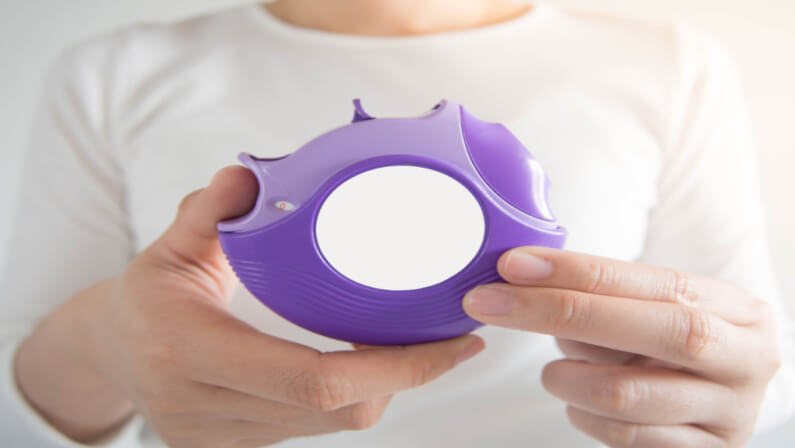
A DPI has a dry powder that disintegrates into an aerosol when inhaled through the mouthpiece.
One can swiftly inhale medicine into their lungs with a dry powder inhaler. The same medication acts more quickly when inhaled than when taken orally.
How do dry powder inhalers work?
Dry powder inhalers come in a variety of sizes and styles. Bronchodilators and corticosteroids are two types of drugs that DPIs can give.
Bronchodilators ease the muscles in your throat, allowing them to open up and facilitate easier breathing. In addition, your airway’s swelling and mucus production are both reduced by corticosteroids.
Types of the dry powder inhalers
DPIs can hold one or more medications inside. For instance, DPIs used to treat respiratory disorders frequently include a corticosteroid to lessen airway irritation. To widen the airways, however, they could also be given a bronchodilator.
Most DPIs are designed to be used consistently over time to prevent symptoms.
The DPIs that are currently accessible are listed below, along with a breakdown by health conditions:
Asthma and COPD
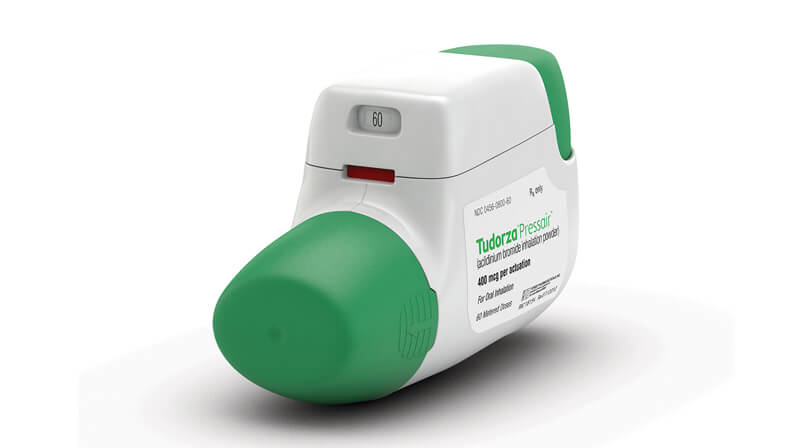
For Asthma and COPD, these are the types of dry powder inhalers available in the market:
- Albuterol sulfate (ProAir Digihaler, ProAir RespiClick)
- Aclidinium (Tudorza Pressair)
- Budesonide (Pulmicort Flexhaler)
- Budesonide/formoterol (Symbicort, Breyna)
- Fluticasone furoate (Arnuity Ellipta)
- Fluticasone propionate (Flovent Diskus, ArmonAir Digihaler)
- Fluticasone propionate/salmeterol (Advair Diskus, Airduo Digihaler, Wixela Inhub)
- Fluticasone furoate/vilanterol (Breo Ellipta)
- Fluticasone furoate/umeclidinium/vilanterol (Trelegy Ellipta)
- Mometasone (Asmanex Twisthaler)
- Umeclidinium (Incruse Ellipta)
- Umeclidinium bromide/vilanterol (Anoro Ellipta)
Cystic fibrosis
For this condition, this is the type of DPI made available:
- Tobramycin (Tobi Podhaler)
Diabetes
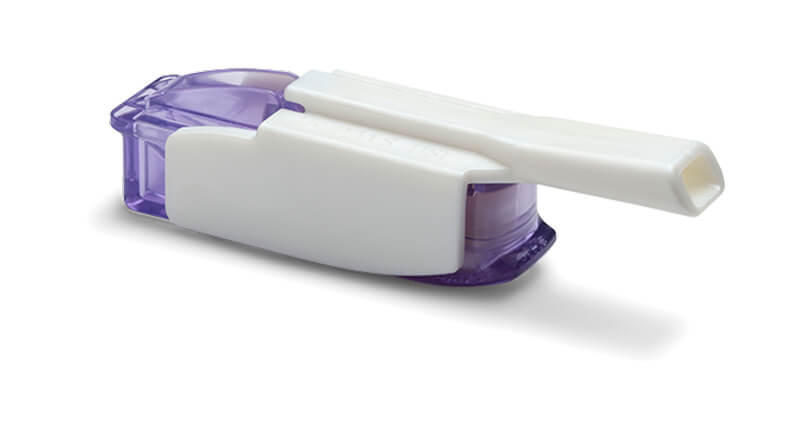
For Diabetes, this is the type of DPI made available:
- Insulin (Afrezza)
Flu
When it comes to Flu, this is the type of DPI made available:
- Zanamivir (Relenza Diskhaler)
Parkinson’s disease
For Parkinson’s disease, this type of DPI is available:
- Levodopa (Inbrija)
Schizophrenia
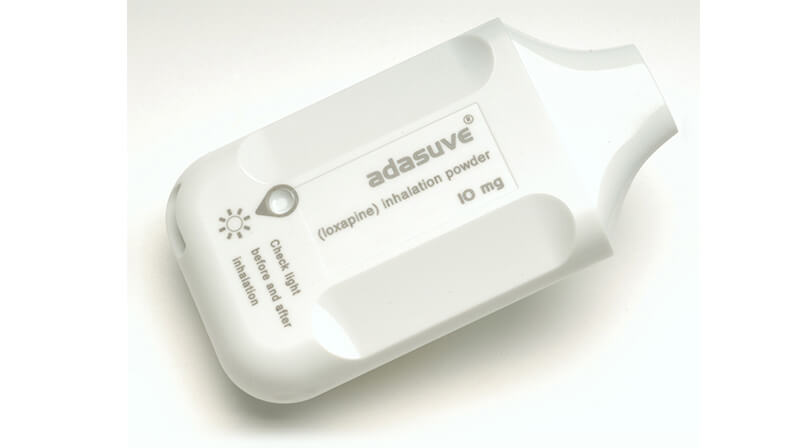
For Schizophrenia, this type of DPI is available:
- Loxapine (Adasuve)
How to use a dry powder inhaler?
The core mechanism that powers all DPIs is the same. To ingest the powdered medication within, you open the device, place your mouth over the opening, and suck up the powdered medication.
Here’s a step-by-step guide on how to use DPIs:
- Remove the cap and load your device. Some people must refill their inhalers with medication each time they use them. Some already contain a supply of medication. One has to “load” each dose of the medication for these each time you take it.
- Hold your inhaler steady in one hand. Do not shake the DPI.
- Sit up straight and breathe out. Sit or stand up straight and exhale fully. One of the most crucial stages is to breathe out completely.
- Close your lips around the mouthpiece. When exhaling, keep the inhaler away from the mouth because it can blow out some medicine.
- Inhale through your mouth. Close the lips tightly around the mouthpiece. Inhale quickly and deeply through your mouth.
- Hold your breath for 10 seconds. This will enable the medication to absorb into the lungs.
- Breathe out slowly. Slowly exhale through pursed lips. Be careful not to exhale into the inhaler.
- Repeat steps 1 to 7 if needed. If needed to take a second dose, repeat these steps.
- Do a post-treatment rinse and spit. Rinse with water if the medication is a corticosteroid. Since corticosteroids might impair the immune system in your mouth, this helps prevent oral thrush.
- The device should also be sealed and kept dry. Use only a dry cloth to clean the mouthpiece; avoid washing it with water.
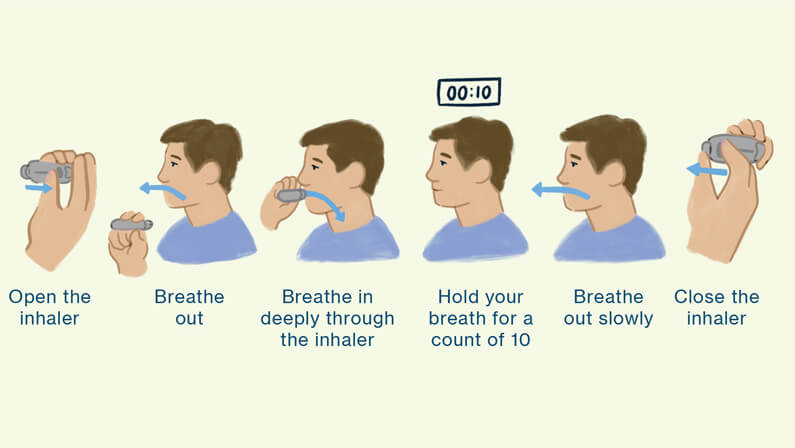
Dry Powder Inhaler Examples
Many other DPI types have been authorized over time. Each one has a unique loading mechanism.
- Diskus (Advair, Flovent, and Serevent). Diskus includes 60 doses of the prescribed medication. In addition, it contains a dosage counter that continuously tracks the number of doses used.
- Turbohaler or Turbuhaler (Symbicort). Budesonide and Formoterol are the two drugs in this combination product. Budesonide is a member of the corticosteroid class of drugs, while the latter belongs to bronchodilators.
- Pulmojet (Lifsar). A revolutionary, user-friendly dry-powder inhaler with dose feedback mechanisms gives doctors and patients peace of mind that the proper dose is administered. Its straightforward design allows for dependable and efficient drug delivery. Utilizing PulmoJet only requires three easy steps: opening, breathing in, and closing.
- Novolizer (Budelin and Ventolin HFA). Salbutamol (albuterol) and budesonide are both licensed for use with the multidose breath-actuated dry powder inhaler (DPI) known as Novolizer. It contains several patient feedback systems and an inspiratory flow rate threshold to optimize dosage.
Pros and cons of dry powder inhalers
A study indicated that nearly 80% of MDI users prefer the convenience of administering a DPI inhaler. However, it still has its pros and cons.
The benefits include:
- Ease of use. With a spray, you don’t need to time your breath as you do with conventional inhalers. Kids as young as five can learn the skill; all that needs to be done is breathe in sharply through the mouthpiece.
- No propellants. DPIs don’t use propellants. Thus they don’t have as much chance to harm the environment.
- Resistance to contamination. Proper care of your DPI will make it incredibly resilient to fungi, viruses, and other microorganisms.
Some drawbacks of DPIs include the following:
- Moisture sensitivity. The powder may stick inside the device because water or saliva interferes with the medicine dissemination procedure.
- It may not work well in emergencies. You might not be able to breathe deeply enough to suck out the powder if your airways have congested.
- It may not work well for older adults. Some older adults may experience difficulty with shallow or rapid breathing. Up to 75% of older persons may find it challenging to breathe deeply enough to activate the Turbohaler, according to 2017 research.
Safety and side effects of the dry powder inhaler

Although DPIs are generally safe to use, some individuals may develop adverse effects or allergic reactions to the medicine contained.
Common side effects (meaning they occur in up to 1 in 10 people) include:
- Headache
- Oral thrush
- Fluttering heart rate
- Increased coughing
- Change in mucus color or more mucus in general
More serious side effects include:
- Wheezing
- Chest pain
- Tachycardia (fast heart rate)
- The rise in your blood sugar
- Cataracts or glaucoma
How to maintain your dry powder inhaler
Taking good care of DPI makes it serve its purpose better and longer.
Here are some brief instructions for managing and maintaining your DPI:
- When not in use, keep the inhaler closed.
- Always inhale deeply and quickly. The entire dose of the drug could not get to the lungs otherwise.
- Keep the DPI in a dry, cool environment and away from the bathroom.
- Never clean a DPI with water. At least once per week, clean the mouthpiece with a dry towel.
- Avoid shaking it or breathing into your DPI.
Important Reminder

Always keep the DPI where it’s most accessible to use in times of need. However, if the DPI is not helping enough in the situation, proceed to the nearest, reliable, and attentive emergency care.
Rice Emergency Room in Rice Boulevard, Houston, Texas, is a full-service 24-hour emergency center in Houston, Tx that offers all benefits of a traditional hospital emergency room but is better with shorter wait times, convenient and clean locations, and superior service.
Residents near the area whose breathing can no longer be normalized by inhalers should proceed to RICE Emergency Room as soon as possible. For others who live outside the area, visit the nearest one accessible.




